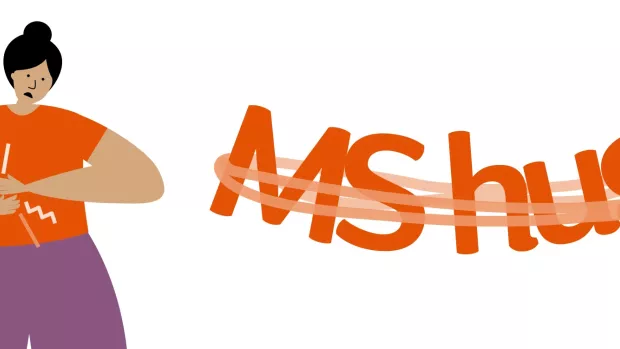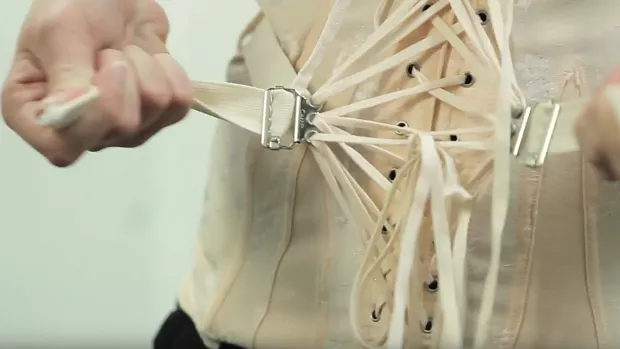
Asking for help with the MS hug
I was diagnosed with multiple sclerosis with acute onset in May 2017. I wanted to write about the MS hug as it seems there's not a lot out there that mentions it.
I went from living my normal life, working full time, being a mum and caring for our animals to being paralysed from the chest down, unable to move and losing my sight.
Since receiving my monthly drip in hospital, I have recovered very well and do my best to live life to the fullest every day.
Dealing with different symptoms
Most of the time my symptoms vary between leg issues and issues with my bladder.
I also suffer from Uhthoffs phenomenon. This causes me to temporarily lose my vision and become unwell when I get too hot
> Read more about the effects of temperature on MS
I have to deal with lots of different symptoms. But there’s one particular symptom that can be unbearable at times – the ‘MS hug’. It seems to me that even within the MS community, there can be a lack of knowledge about its effects - both from those living with MS and the professionals treating us.
How the MS hug feels to me
This symptom can be exceptionally painful. As with all neurological issues, people can have different experiences of it and to different extents.
Mine tends to start with small stabbing pangs of pain and spasm in my side that slowly spreads around my torso. Some liken the pain to that of a belt or indeed a ‘hug’. In my opinion, the belt is far too tight and the hug is entirely unwelcome.
It can feel impossible to draw breath and at times leave me unable to move, curled up in foetal position. At times, it’s often felt like a very intense pregnancy contraction. My only relief from it is an anti-spasticity drug.
Finding ways to manage my MS hug
I remember having a large number of them on an almost daily basis. I spoke with my MS nurse (an invaluable resource to my quality of life!), who asked how I was managing it.
I had instantly been reaching for heat pads and hot water bottles until medication kicked in. She suggested that I might find applying a cold compress to be more effective. This made sense to me and I found doing this made a world of difference.
> Applying hot or cold seem to help different people - read more on our MS hug info page
Although the hug is an ‘invisible’ symptom, it’s visible to friends and family when I can’t stand up straight and slowly curl down into a ball. It can be so painful, I can’t speak, move or acknowledge anyone.
All I need from them is a little understanding and to be handed a blister of my medication to help me recover.
After it has passed, I can feel as if I’ve run a marathon and had a workout to boot.
If you get the MS hug, ask for help
For those of us that suffer through bouts of the ‘hug’ whether it be a slight tightening around the middle, an uncomfortable spasm or a full blown attack, remember that you’re not alone.
You can speak with your MS professional about anti-spasticity drugs and ways to manage it that work for you.
Although the hug can be debilitating, it does pass, which I try and keep in mind. If you’re ever in doubt or feel that your symptoms are worsening, get in touch with your GP, MS nurse or neurologist to chat.
I once asked my GP about another symptom I was bothered with. I remember telling him “If it’s just MS related, I’ll live with it, but I wanted to chat to you first”. He told me “Shirley, you don’t have to ‘just live’ with anything. If there is something you’re worried about health wise, come to me and let’s see what the options are”.
Don’t live through debilitating symptoms alone, always talk it through with someone. There’s always an avenue worth exploring.
> Read more about MS hug, and what might help
How does MS hug feel to you?
Help spread the word about MS in MS awareness week and share your MS symptom story.
Get involved with MS Awareness week, tell the world #ThisIsMS




